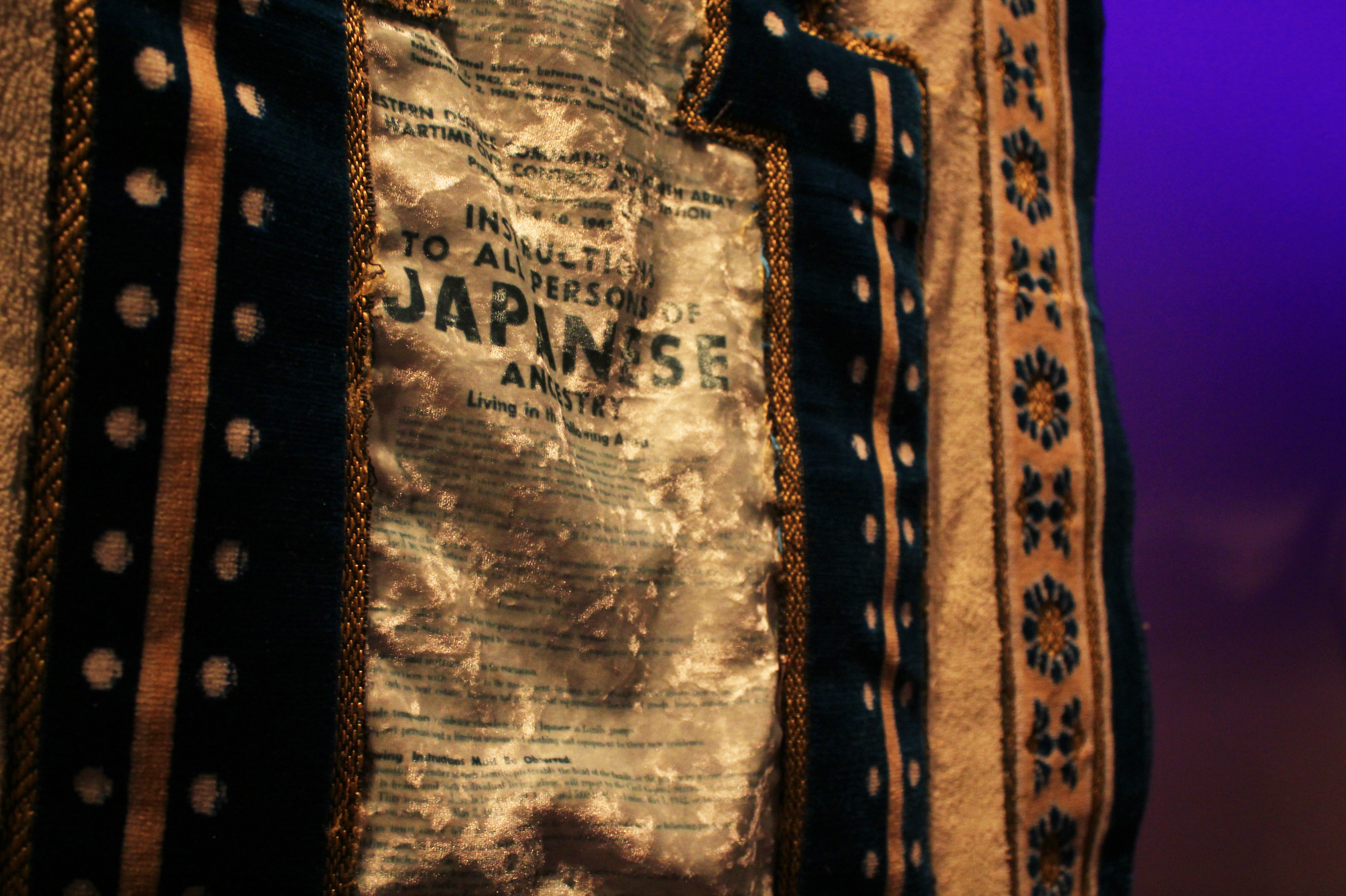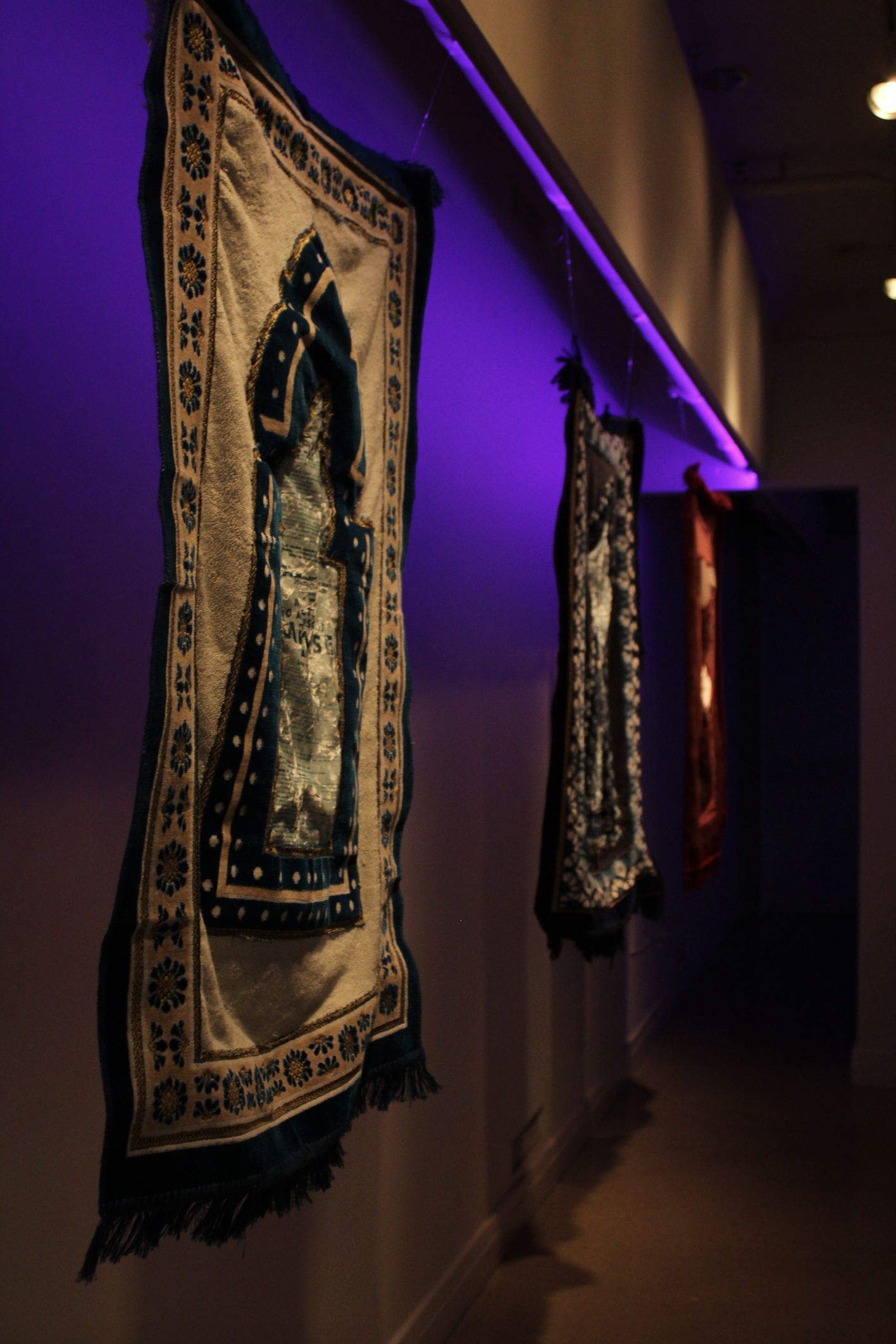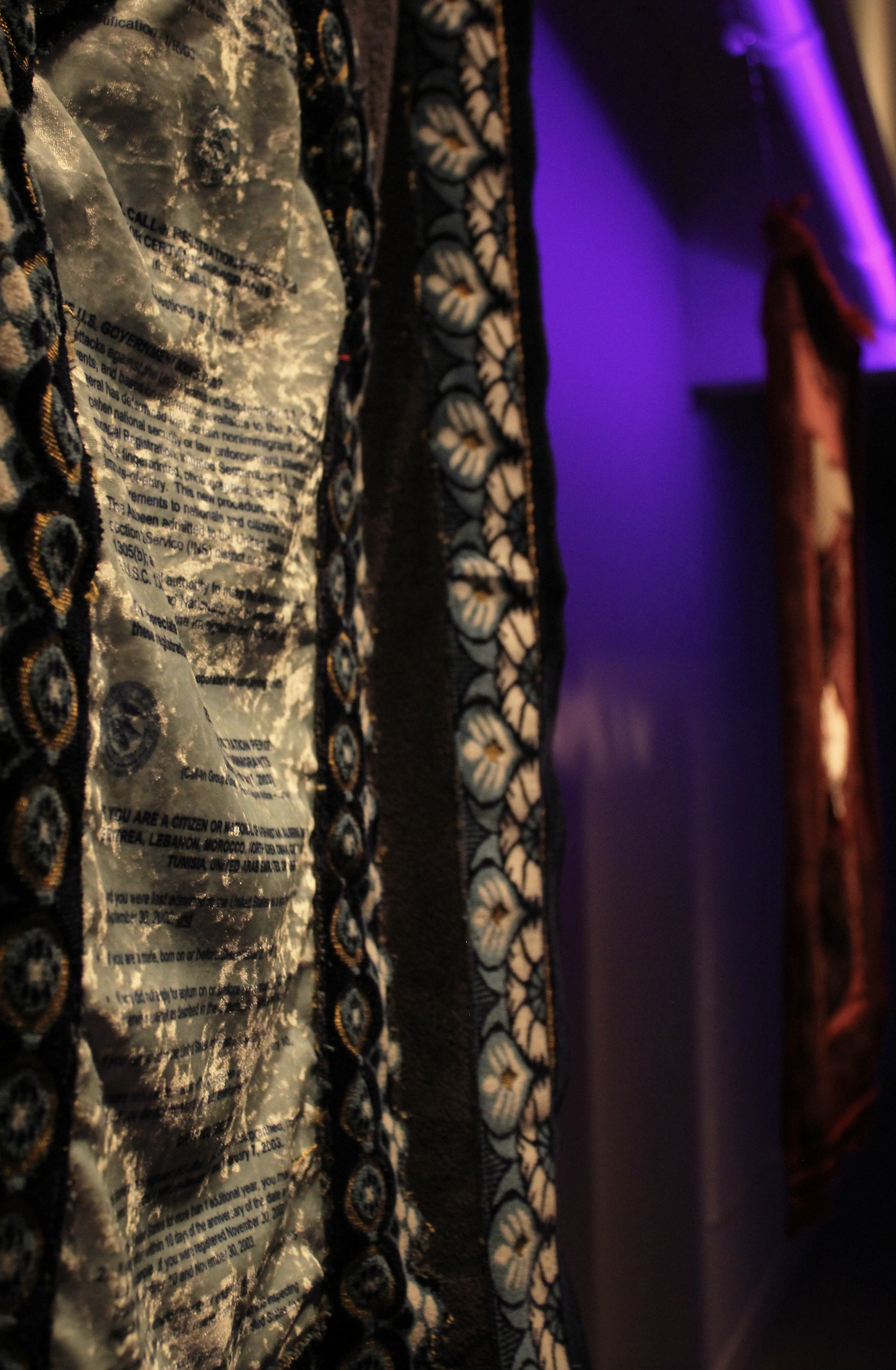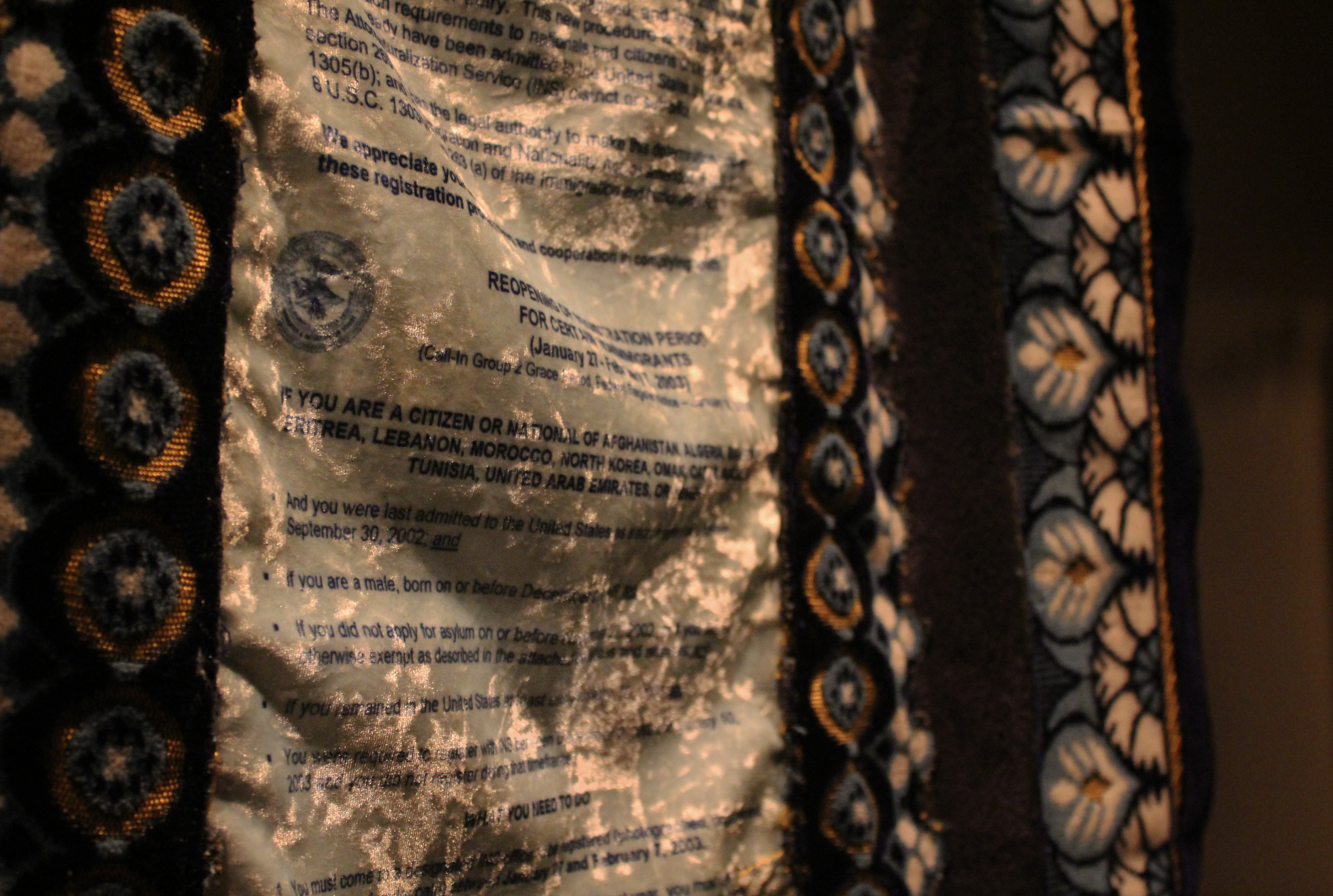THRESHOLDS
(3) Prayer Rugsmaterials
- Bath towels
- Prayer rugs
- Executive order 9066
- National Security Entry-Exit Registration System (NSEERS)
- Leaked “Black Identity Extremist” FBI Report
Process Notes:
My family and I have been personally affected by both Japanese incarceration and the persistent waves of Islamophobic policy and violence. However, these kinds of experiences are not just a few particularly violent moments in time, but rather, a part of a continuing history of surveillance and criminalization of Black people, indigenous people, people of color, and immigrants.
Before Trump’s 2016 muslim registry proposal there was the 2003 National Security Entry-Exit Registration System (NSEERS), a special registry sytem targeting foreign nationals from 25 countries based on religion, ethnicity, and national origin. NSEERs focused on predominantly AMEMSA (Arab, Middle Eastern, Muslim, South Asian) communities.
I grew up in a immigrant household with extended family of aunts and uncles. Despite the fact that the program did not find one single terrorist during its 8 years, my uncle was one of the many people who were forced out of the country post 9/11.
As a kid I’d walk past my dad’s open door and see him kneeling on a bath towel, softly muttering to himself as steam from his shower slowly swirled around his bedroom. No beautiful prayer mat in sight. I didn’t realize until I was older that he way praying.
When Trump started talks of a “Denaturalization Task Force,” my dad said that his citizenship would protect him, that it didn’t matter that he was born in Syria, he’d been a citizen since the 1980’s. I sat my father down to explain that when the Japanese incarceration executive order 9066 was enacted in 1942 those people were American citizens too. From the Page act of 1875 to the Chinese exlusion act, one thing America is consistent with it their criminalization of non-white people.
Recently leaked document outlining the FBI’s “Black Identity Extremist” investigations of the movement for Black Lives is just a grandchild of the same ideology that created COINTEL PRO (1956–1971), a series of covert and illegal projects actively conducted by the United States Federal Bureau of Investigation (FBI) aimed at surveilling, infiltrating, discrediting, and disrupting political organizing done by groups like the Black Panthers.
It may be 2022 but not much has changed.
Work and coversations on multiracial/ethnic identity are often rooted in whiteness: what do you pass for? Or cis-heterosexual reproduction: what will your kids look like?
What I look like is the least interesting thing about me.
In her work "So, I turn inside": Overcome by the Unbearable, Seeing Myself in Michiyo Fukaya” my sister, Dr. Anna M. Moncada Storti, writes, “held in relation to the past and the future, my mixed race reflects a world in flux…I am less a bridge, more a threshold. You, too.”
Instead of more photo essays documenting mixed kids with white features, as a multiracial person I’m interested in mapping thresholds as a means for navigating one other. Histories we are asked to forget on purpose. Gaps in understanding. Liminal thresholds for new was of relating to one another.
Angela Davis reminds us that radical simply means “grasping things at the root.” Yes, it is important to remember our opressions are connected at the root, but there is strength in owning that our differences do not need to be obscured for us to be in this movement side by side.







